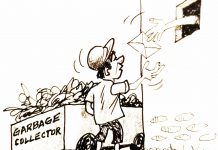A college instructor once caught a student submitting an essay entirely generated by ChatGPT, the plagiarism so obvious that the student did not even bother to read it before handing it in. Such stories are no longer rare, showing one disturbing reality: artificial intelligence cannot—and should not—be trusted all the time. Depending solely on it invites stagnation of human judgment, critical thinking, and authentic intellectual labor.
AI stumbles when the task demands empathy, cultural sensitivity, or firsthand human experience. It can produce grammatically correct paragraphs, but they often lack the pulse of lived reality, the texture of human struggle, and the subtle contradictions that define truth. A machine does not know what it feels like to sit in a flooded classroom, or to walk home after a long day of teaching in the barrios, or to watch a student’s face brighten when they finally grasp a difficult concept. These are the details that bring meaning, and no algorithm can breathe life into them the way human minds can.
Teachers, in particular, are witnesses to this limitation. When AI writes sample lesson plans or essays, it may look perfect on the surface, but the content is shallow. It is like a dish that looks delicious but tastes bland. There is no seasoning of context, no spice of local color, no aroma of lived insight. Students who rely on such work risk dulling their intellectual blades, submitting outputs that may pass a glance but collapse under serious scrutiny.
Researchers, too, must be wary. AI thrives on what already exists online; it stitches fragments of the past into a neat quilt of words. But in real research, what matters is the act of delving deeper, questioning, validating, and building new knowledge. AI cannot conduct fieldwork, it cannot observe social dynamics in the marketplace, and it certainly cannot smell the salt of the sea while interviewing fishermen about climate change. It only rehashes what others have written. To call that research is to confuse recycling with discovery.
Writers face an equally tricky trap. When one outsources the act of writing to a machine, what happens to voice, to style, to the little quirks that make one’s work distinct? AI drafts may be grammatically flawless, but they sound eerily the same, flat as canned laughter. Literature and creative expression are not just about getting the words right; they are about cultivating a voice that echoes beyond the page. If we let AI do the heavy lifting, our own voices will drown out, swallowed by a sea of sameness.
Even in journalism, the danger is palpable. AI cannot verify facts independently; it can string together information, but it cannot knock on doors, chase leads, or confront liars. It cannot sit with survivors of a typhoon and capture their trembling voices as they recount their loss. Without human fact-checking and ethical responsibility, AI-written reports can easily spread misinformation, a perilous outcome in a world already drowning in fake news.
The irony is that while AI is marketed as a tool to foster efficiency, it often lulls people into intellectual laziness. Students type a prompt and wait for instant answers. Teachers are tempted to let it prepare their lectures. Writers may see it as a shortcut for deadlines. But when the shortcut becomes the main road, we find ourselves lost, with no sense of direction, no stamina for the journey, and no capacity to think critically. The human brain, like a muscle, weakens without exercise.
Yes, AI can be a useful ally in gathering information or sparking ideas. But like fire, it is dangerous when left unchecked. The best approach is to leverage it as a starting point, not an endpoint—to navigate its offerings with skepticism, supplement its limitations with our judgment, and keep alive the gift of human thinking. After all, it is not AI that will define our future—it is our ability to remain human, to write and reason with authenticity, and to keep the flame of critical thought unwavering.




